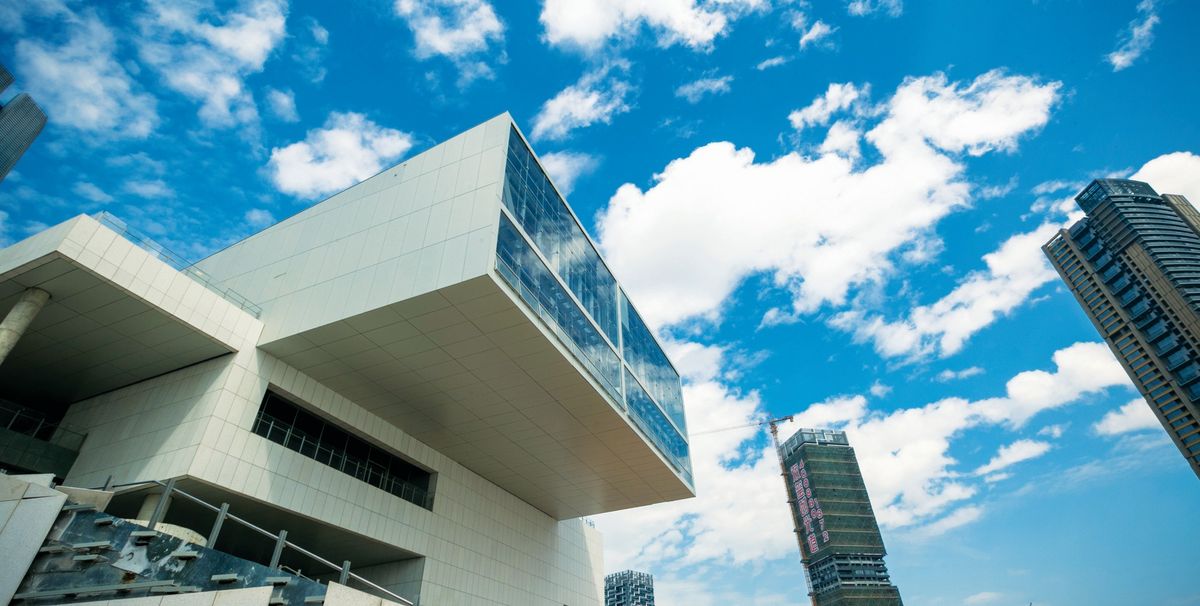Design Society, the project in the industrial town of Shenzhen co-founded by China Merchants Shekou Holdings (CMSK) and London’s Victoria and Albert Museum (V&A), will open in October. The V&A’s gallery contained within will debut with the exhibition Values of Design, while Design Society’s main gallery launches with Minding the Digital, featuring around 40 artists and designers looking at how digitalisation has shaped society.
The V&A’s 850-sq.-m space has a mission to present exhibitions of 20th- and 21st-century design from its collection. Its Values and Design show, which looks at conundrums of design practice over time, is broader, with 250 objects from 31 countries from as far back as AD900. Items such as 19th-century sandals and a 1960s paper dress show the origins of fast fashion, while a comb made of Parkesine, an early plastic, and a Fairphone, made of conflict-free minerals, examine creative solutions to material scarcity, says Brendan Cormier, the curator of V&A’s Shekou project.
The V&A Gallery is one of four now planned for Design Society: it will operate alongside a branch of Guanfu, an antiquities museum founded in Beijing in 1997, the Main Gallery and a gallery dedicated to China’s Opening and Reform period. Design Society will also organise residencies and awards to develop young talent and rent space to 16 design-focused tenants. It is housed in the Sea World Culture and Arts Centre, a 71,000-sq.-m waterfront complex designed by Maki & Associates.
Practical challenges In recent years, as China invested billions in culture, Western institutions have sought to raise their profiles in the country. But practical challenges including costs, cultural differences and language barriers have limited collaboration. Few institutions “have the courage or mandate or leadership” to take on “endeavours that are unpredictable”, says Ole Bouman, the director of Design Society. International museums often “want to be embassies, and control the script”.
The V&A’s partnership with Design Society initially lasts five years. But it remains to be seen whether the museum’s new director, Tristram Hunt, will be as bullish on collaboration as his predecessor, Martin Roth, who had a long history with China.
In the meantime, a new wave of partnerships suggests that Chinese museums are becoming ever more receptive to international exchanges. The Centre Pompidou in Paris is expected to open a branch in Shanghai in the next two to three years. At the beginning of March, the National Museum of China in Beijing opened a show of works from the British Museum inspired by the BBC radio series A History of the World in 100 Objects. The show will travel to the Shanghai Museum this summer. In San Francisco, the Asian Art Museum is exhibiting Han Dynasty tomb artefacts on loan from the Nanjing Museum and Yizheng Museum (until 28 May). And next month, Shanghai’s Minsheng Art Museum will present a photographic history of 1920s Shanghai film star Butterfly Hu, organised by the Vancouver Art Gallery, one of several shows the Canadian museum plans to send to the Asia-Pacific region.
“China is very open to collaboration,” Luisa Mengoni, the head of the V&A Gallery at Design Society, says. “The changes that have happened in 20 years are amazing, and museum culture is changing quickly. China is opening up.”


